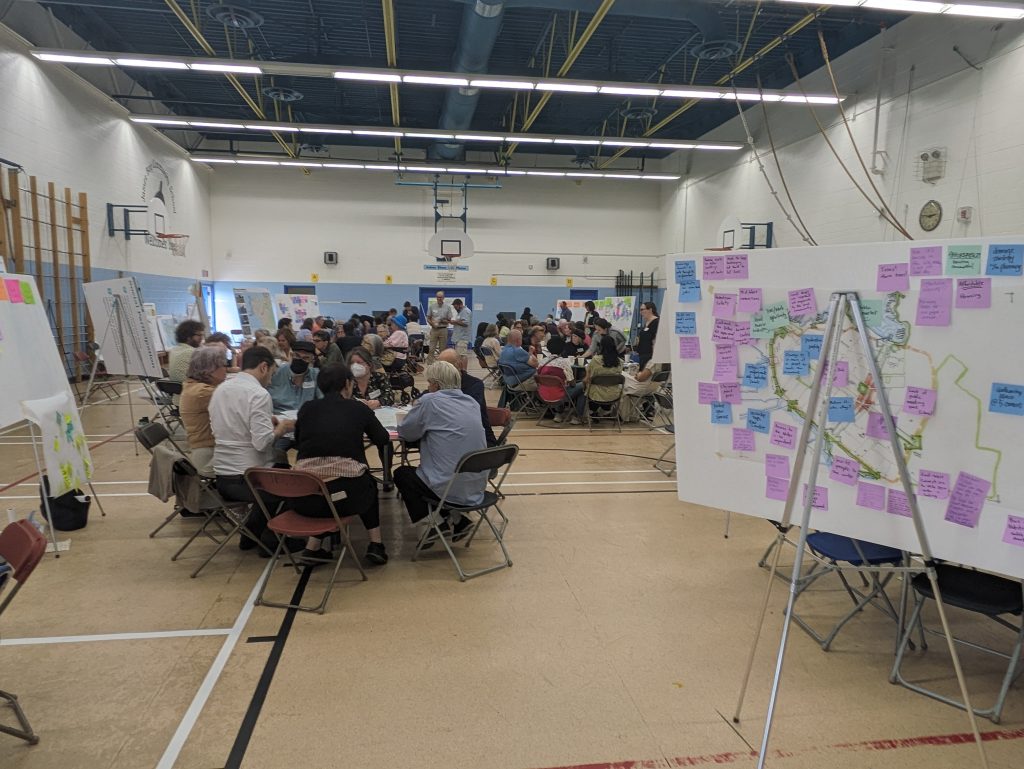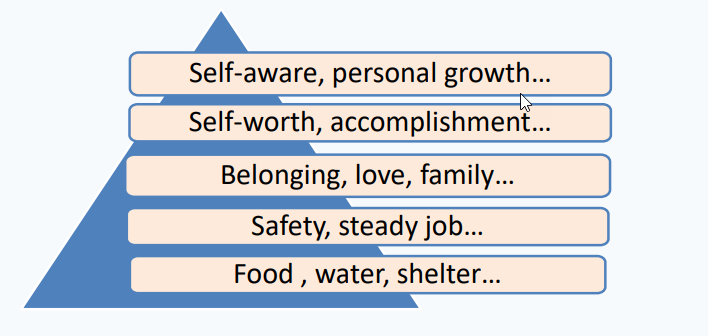As part of the City of Victoria’s 10-Year Official Community Plan (OCP) Update, last Saturday, I attended an OCP engagement event at my local (James Bay Neighbourhood) community centre.
Like many urban neighbourhoods, mine is diverse. There’s a range of people, places and opinions.
A common divergence of opinion that comes up circles around the scale and mix of residential development. Some people want more density and others don’t, at least where they live. Affectionately, known as NIMBYs (not in my back yard), the no-development folks provide a challenge for city planners, assuming urban growth continues along a path of inclusiveness and diversity. What’s a planner and/or density advocate to do?
Maslow’s Hierarchy of Needs
Over the last 25 years, I’ve found Maslow’s Hierarchy of Needs (a theory of human motivation, published by psychologist Abraham Maslow in 1943) a simple, yet effective, tool for analyzing competing interests. I’ve used the tool, as a professional mediator, facilitator, and consultant. I always have Maslow in the back of my mind when it comes to mutual-benefit strategies in response to land-use conflict.
From the bottom heading up, the hierarchy consists of levels of physiological, safety, love and belonging, esteem, and self-actualization needs. The basic needs; e.g., physiological (food, shelter, sex) and safety are at the bottom. A central theme of the hierarchy is that higher-level needs are tough to realize when lower-level needs are unmet.
Applying Maslow to NIMBY concerns
Scenario: Victoria is one of the most expensive places in the world to live. That said, my City wants to increase density (for a variety of reasons), including adding more low-cost and affordable rental units. NIMBYs are against increased density in their neighbourhood. What can the City and density supporters do to shift NIMBY perceptions on density?
Working up from the most basic needs, here’s how you can approach each level of the Maslow hierarchy to find common ground and constructively influence NIMBY perceptions towards more density:
Physiological Needs:
-
- Common Element: Access to resources such as clean water, adequate sewage, basic utilities, green spaces.
-
- Strategy: Assure homeowners that the new development will maintain or even improve the availability and quality of these resources. Highlight infrastructure improvements that come with new developments, like better roads, enhanced public services, and utilities. If its greening that’s at issue, emphasize plans specific to environmental quality and health.
Safety Needs:
-
- Common Element: Safety and security concerns related to changes in the environment, such as potential increases in crime or traffic, and structural integrity of homes.
- Strategy: Emphasize the safety features of the new development. Provide data and case studies showing that similar developments have not led to increased crime or traffic problems. Highlight measures taken to ensure the security and structural safety of the new buildings.
Love and Belonging Needs:
-
- Common Element: A sense of community and belonging, social networks, and neighborhood cohesion.
- Strategy: Foster a narrative that the new development will enhance the community by bringing in diverse, engaged, and responsible residents. Stories change us. Organize community-building activities that include both current residents and potential new residents. Emphasize shared spaces and amenities that encourage social interaction and community bonding.
Esteem Needs:
-
- Common Element: Status, recognition, and respect within the community.
- Strategy: Frame the new development as a positive contribution to the community, of community pride, and as model of progressive, inclusive urban planning. Recognize and celebrate the role of long-term residents in the shaping the neighbourhood, and highlight how the development respects and builds on that legacy.
Self-Actualization Needs:
-
- Common Element: Personal growth, fulfillment, and achieving one’s potential.
- Strategy: Highlight opportunities for personal and community growth that come with new development, such as new cultural activities, educational programs, and social initiatives. Encourage residents to see the new development as a chance to create a legacy of inclusivity and forward-thinking urban development.
Notice how these strategies include an appeal to both the emotional and rational, from pride and legacy to evidence and transparency.
By addressing NIMBY needs and concerns through the lens of Maslow’s hierarchy, the City and density advocates can build a more empathetic and persuasive case for new developments that align with the values and priorities of existing homeowners.



Speak Your Mind